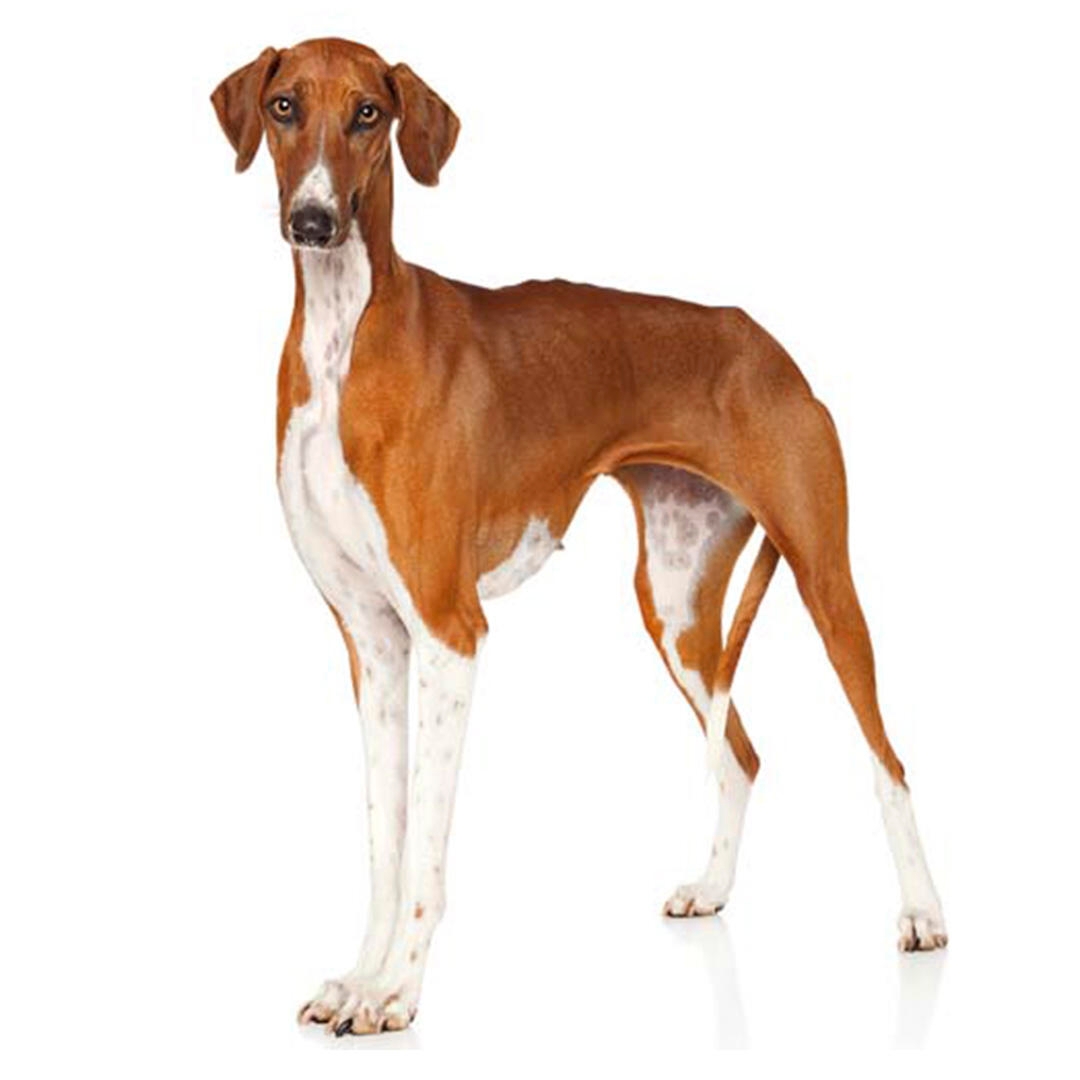
| Family-friendly: | 4/5 |
| Exercise needs: | 4/5 |
| Easy to train: | 3/5 |
| Tolerates being alone: | 3/5 |
| Likes other pets: | 3/5 |
| Energy level: | 3/5 |
| Grooming needs: | 5/5 |
| Shedding: | 3/5 |
The Azawakh is generally a hardy breed with no widely recognised breed specific health problems.
Priority Kennel Club health schemes and testing:
None but there are several recommended schemes that the Kennel Club recommends which can be found here.
The Azawakh is wary and aloof with strangers, and as a guarding dog, their role is to bark to alert and to be aware of what is going on around them. They are curious and incredibly observant, taking their time to assess new people, only becoming affectionate and even goofy when they know a person extremely well. With family they are loving and intelligent companions, ready to work with their people either as a guarding watch dog or as a hunter – and in the pet home, these needs must be taken into consideration. They do not do well alone, or if left under exercised or bored.
| Family-friendly: | 4/5 |
| Exercise needs: | 4/5 |
| Easy to train: | 3/5 |
| Tolerates being alone: | 3/5 |
| Likes other pets: | 3/5 |
| Energy level: | 3/5 |
| Grooming needs: | 5/5 |
| Shedding: | 3/5 |
Originating from the Sahel region of Africa, specifically Mali, Burkina Faso and Niger, the breed has been known by many names, but it is thought the name Azawakh is derived from the Azawagh valley (now called the Iullemmeden Basin) which stretches across these countries.
Bred and kept as a multi-purpose dog for hunting, guarding and as companions by the nomadic Tuareg people, the breed is sometimes referred to as the Tuareg Sloughi or the Idi n’illeli – ‘dog of the free people’. First introduced to France and Yugoslavia in the 1970’s, the French artist Renato Parigi bred and reared several litters in Mali before returning to France with his dogs and continuing to breed. In the 1980’s Gervais Coppe imported more dogs into France from Mali, and he produced the first brindle litters in Europe.
They were recognised by the FCI in 1980, and first bred in the UK in 2003. Azawakh’s were first shown at Crufts in 2016 and are still very uncommon in the UK.
The Azawakh is a bit of a specialist’s dog, being extreme in build, speed and cognition. You’ll need a solid sense of humour, an unflappable nature, no tendency to panic, and be excellent at motivating others. The Azawakh will be no fun at all for those expecting instant obedience – or who need to rely on a solid recall.
Careful exercise, limiting jumping and running as puppies and juveniles, is necessary, however healthy adults will want two hours of exercise, some of this walking and some running in a large secure space. This is a dog from the hot dry desert, so whilst heat won’t be too much of an issue, cold and wet will, and you will need to provide a coat that will fit securely even whilst running, and that will not rub at their fine skin.
Although easily able to curl up small, this is a tall dog that needs some space. A large garden, with high and secure fencing is necessary. They will not do well with stairs as puppies and juveniles so homes that offer lots of ground-floor living are more suitable. Access to a variety of interesting walks and secure spaces to run are vital, so this may well mean the Azawakh is not suited to city living.
Your dog's diet needs to have the right balance of all the main nutrient groups including a constant supply of fresh water. It's important to conduct regular body condition scores to ensure you keep your dog in ideal shape and remember to feed them at least twice daily and in accordance with the feeding guidelines of their particular food.
The smooth, fine coated Azawakh needs little in the way of grooming, although the short coat will shed and it will work its way into clothing and furnishings. A daily brush with a bristle brush to massage the skin and promote good hair growth, followed by a polish over with a cloth will be sufficient. Although they won’t need brushing daily, it is good to check every day for grazes and scrapes, cuts and bumps to their very soft thin skin.
Not a dog that will enjoy training for its own sake but pay careful attention to early and correct socialisation and habituation. Work hard on training a solid recall, and socialise well with other animals. This breed will always have a strong prey drive, so learning how to handle a long line clipped to a harness, and how to read the environment before letting your Azawakh off lead is vital. Azawakhs do well in lure coursing competitions and even if that isn’t your thing, using the opportunity to chase and catch toys is a good way to engage and motivate your hound.
This is a specialist dog for those who absolutely adore sighthounds and their quirky ways. Best for those who do not expect a dog to leap to follow a command, and who are willing to work hard to motivate their dog. Great with older children but not suited to very small children as puppies and juveniles are big, boisterous and bouncy, and puppy mouthing and play biting will be hard to manage.
While many dogs are traditionally thought of as being good with children, all dogs and children need to be taught to get on with and respect each other, and be safe together. Even so, dogs and young children should never be left alone together and adults should supervise all interactions between them.